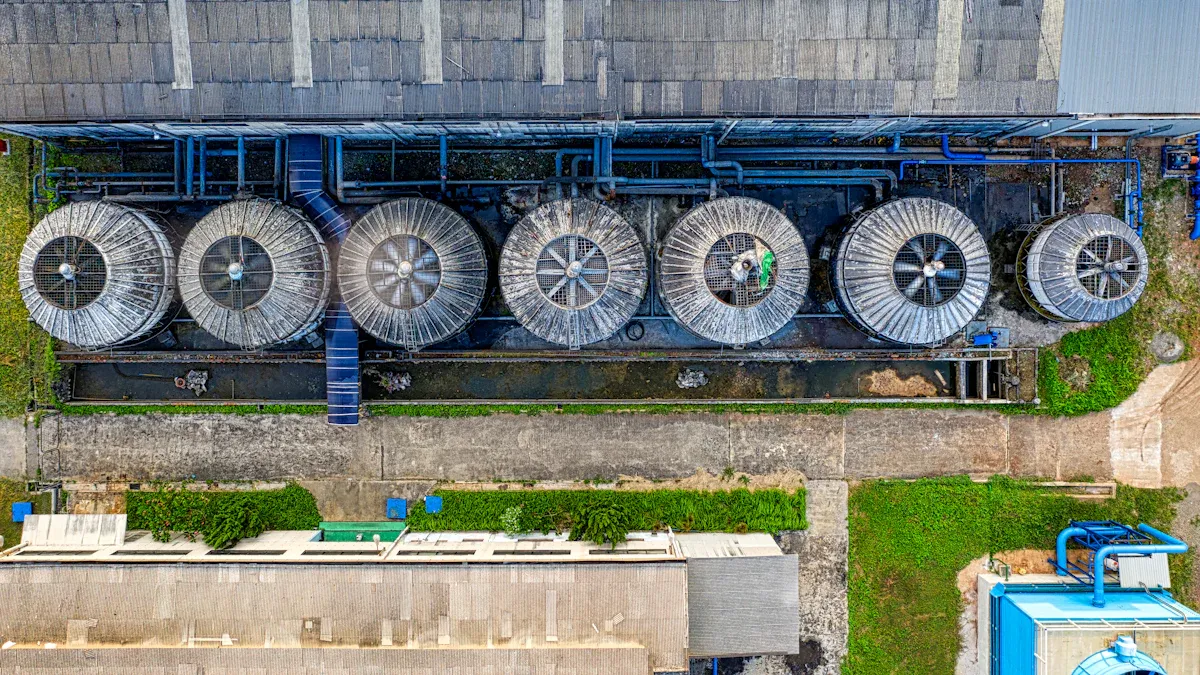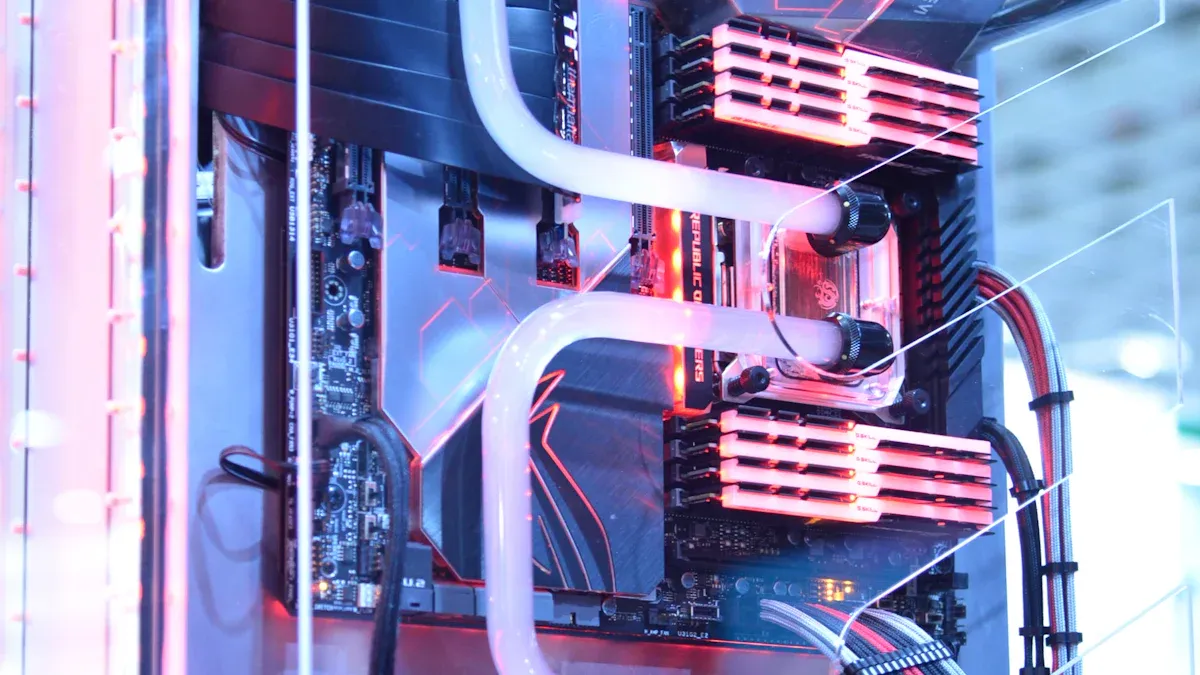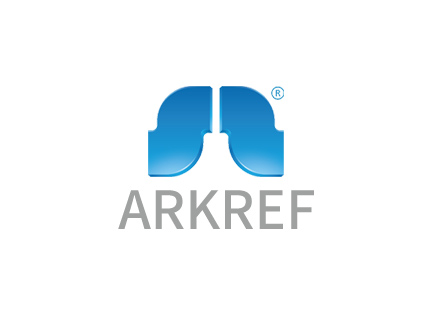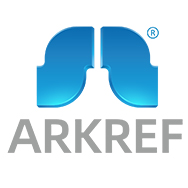What Are Water Chillers and How Do They Work

A water chiller is a machine that cools water by removing heat. These systems are used to control temperatures in factories, food plants, and data centers. They are very important for keeping things cool in busy places.
The worldwide market for chillers might reach $20.14 billion by 2024.
Growing at 5.33% each year, it could hit $35.64 billion by 2035.
Water cooling systems will likely lead because they work well in industries.
Water chillers help keep temperatures steady and improve efficiency in many areas.
Key Takeaways
Water chillers make water cold by taking away heat. They are important for industries like food factories and data centers.
There are different chillers, like air-cooled and water-cooled. Pick one based on your space and cooling needs.
It’s important to take care of chillers. Check filters and parts every few months to keep them working well.
Water chillers can save energy and cut costs. This is helpful for big places like factories and hospitals.
Chillers keep temperatures steady, which is needed for making medicine, building things, and doing research.
What Is a Water Chiller?

Definition and Purpose
A water chiller is a machine that cools water by removing heat. It keeps water at the right temperature for specific tasks. These machines are important in industries needing exact temperature control. For example, in food processing, correct water temperature affects product quality.
Water chillers provide steady cooling by circulating cold water in a loop. This helps keep equipment, products, or spaces at the right temperature. Without chillers, many factories and businesses would struggle to work efficiently.
Importance of Temperature Control in Industrial and Commercial Settings
Controlling temperature is very important in factories and businesses. Many processes need exact temperatures to work properly. For example, chemical reactions can fail if the temperature changes by ±0.1°C. Semiconductor production also needs precise temperatures for good results.
The table below shows how industries depend on temperature control:
Industry | Temperature Need | Effect of Wrong Temperature |
|---|---|---|
Chemical Reactions | ±0.1°C | Over 10% drop in product yield |
Semiconductor Manufacturing | ±0.1°C | Affects product quality |
Battery Testing | -40°C to 100°C | Needs fast temperature changes |
Bio-pharmaceuticals | -150°C | Requires very cold storage |
Demand for better cooling systems is growing fast. Industries like food and medicine need precise cooling to follow strict rules. This has led to big investments in advanced chillers. By 2025, the cooling industry may reach USD 1.5 billion, growing to USD 2.44 billion by 2035.
Reasons for this growth include:
The need for exact cooling in sensitive tasks.
Rules requiring businesses to use better systems.
Water chillers help meet these needs. They keep processes smooth, ensure products are high-quality, and help businesses follow rules.
How Does a Water Chiller Work?
Overview of the Cooling Process
A water chiller cools water by taking away its heat. The heat is moved to another place, leaving the water cold. This happens through a refrigeration cycle using a special liquid called a refrigerant. The refrigerant absorbs heat and then releases it elsewhere. Think of it as a system that keeps pulling heat out of water to keep it cool.
Here’s an example to explain it better:
A trigeneration system uses natural gas to power a cooling process.
It combines electricity, heating, and cooling to work efficiently.
These systems save energy and manage heat transfer very well.
This cooling method helps industries keep the right temperatures. It’s useful for factories, food plants, and data centers.
Key Components of a Water Chiller
A water chiller has important parts that make it work well. Each part has a job to do in the cooling process. Here’s a list of the main parts:
Component | What It Does |
|---|---|
Fully Enclosed Liquid Circulation | Keeps the system sealed to stop air or water damage. |
High-Temperature Rapid Cooling | Quickly cools hot water to save time and energy. |
Intelligent Variable-Frequency | Adjusts cooling levels to save energy and stay steady. |
Keeps water temperature very accurate, within ±0.1°C. | |
Integrated Heat Recovery System | Reuses heat to save energy and improve cooling. |
Standardized Processes & Certification | Built under strict rules to ensure safety and quality. |
Premium Components | Uses trusted parts from top brands for better performance. |
These parts work together to make chillers reliable and efficient for many uses.
Step-by-Step Breakdown of the Chilling Cycle
The chilling cycle cools water in a few simple steps:
Heat Absorption: The refrigerant takes heat from the water, turning into gas.
Compression: The gas is squeezed to raise its pressure and heat.
Heat Release: The gas releases heat into the air or water, becoming liquid again.
Expansion: The liquid’s pressure and temperature drop, ready to absorb heat.
Recirculation: The refrigerant goes back to start the process again.
This cycle keeps water at the right temperature. It’s vital for cooling machines or keeping data centers stable. The process ensures smooth operations in many industries.
Types of Chillers
Air-Cooled Water Chillers
Air-cooled chillers use air to cool the refrigerant. They are great for places with little or costly water. These chillers are common in small buildings or areas with no water access. Fans blow air over coils to remove heat into the air.
One big advantage is their simple design. They don’t need extra tools like cooling towers, so they’re easy to set up and care for. But they might use more energy in very hot places.
Tip: If you want a small, easy-to-maintain cooling system, air-cooled chillers are a good pick.
Water-Cooled Water Chillers
Water-cooled chillers use water to take heat from the refrigerant. They are often used in big factories or offices because they cool better and save energy. These chillers work with cooling towers to release heat into the air. They are best for places with steady water supplies.
These chillers are more energy-efficient than air-cooled ones. They work well in hot areas and can handle bigger cooling needs. But they need more upkeep and equipment, like pumps and cooling towers.
Note: If your building needs strong cooling and energy savings, water-cooled chillers are a smart choice.
Vapor Absorption Chillers
Vapor absorption chillers use heat instead of electricity to cool. They run on heat sources like steam or hot water. A chemical mix (usually lithium bromide and water) helps absorb and release heat.
These chillers are eco-friendly and efficient. They use safe refrigerants and have fewer moving parts, so they cost less to maintain. They are quiet and don’t shake much, making them great for hospitals or labs.
Type of VAM Chiller | Heat Source Temperature | |
|---|---|---|
Single-Effect | Low | ~1.0 |
Double-Effect | Medium to High | ~1.2 - 1.4 |
Triple-Effect | Very High | ~1.8 - 2.0 |
The COP depends on the type of vapor absorption chiller. Single-effect chillers work with low heat, while triple-effect ones need very high heat. These chillers are popular in industries that care about saving money and the planet.
Tip: Vapor absorption chillers are ideal for cutting environmental impact while staying cool.
Inline Water Chillers
Inline water chillers are small systems that cool water as it moves through pipes. Unlike other chillers, they are placed directly in the water line. They cool water instantly without needing big tanks or extra tools.
These chillers are great for places with little space. Their compact size makes them perfect for labs, clinics, and small factories. They also save energy by cooling water only when needed, avoiding wasted power.
Inline water chillers use a cooling process like vapor absorption chillers. They take heat from the water and release it into the air. This keeps the water at a steady temperature, which is important for tasks needing exact cooling.
A big benefit of inline water chillers is their steady performance. They keep water temperatures very accurate, often within ±0.1°C. This makes them ideal for medical machines, lab tests, and drink machines. Their simple design also makes them easy to maintain, saving time and effort.
If you need a dependable cooling system for small tasks, inline water chillers are a smart pick. They are efficient, precise, and easy to use, making them helpful in many industries.
Tip: Check the flow rate and cooling power of an inline water chiller to ensure it fits your needs.
Applications of Chillers in Different Industries
HVAC Systems
Chillers are key to HVAC systems for cooling buildings. They keep indoor spaces like malls, offices, and hospitals comfortable. Water-cooled chillers are popular because they save energy and handle big cooling needs.
Efficiency measures like kW/ton and COP show their benefits:
Metric | What It Means |
|---|---|
kW/ton | Power needed to cool one ton of air |
COP (Coefficient of Performance) | Higher numbers mean better energy savings |
Chilled water ΔT | Shows how well heat is removed |
Using chillers lowers energy use and boosts HVAC system performance. They are important for modern cooling solutions.
Manufacturing and Industrial Processes
Chillers help control temperatures for machines and materials in factories. Industries like petrochemicals and car-making depend on water-cooled chillers. These chillers handle big heat loads and work steadily in tough conditions.
In 2024, water-cooled chillers made up 39% of the market. They transfer heat better and take up less space than air-cooled chillers. This makes them great for saving room while staying efficient.
Factories use chillers to protect machines, improve work speed, and keep operations smooth.
Food and Beverage Processing
Chillers are vital for food and drink production. They keep temperatures steady during pasteurization, fermentation, and storage. Vapor absorption chillers are eco-friendly and use waste heat for energy.
France uses IoT tech in chillers for better monitoring and maintenance. Natural refrigerants like CO2 and ammonia help meet green goals and cut pollution.
Chillers help meet strict rules, keep food fresh longer, and lower energy costs. They are essential for food and beverage industries.
Medical and Pharmaceutical Applications
Water chillers are very important in medicine and pharmacy. They keep equipment and processes at the right temperature. For example, MRI machines need chillers to stay cool and work properly. This prevents overheating and keeps imaging accurate. In pharmaceutical production, chillers help maintain chemical quality and meet strict rules.
Vapor absorption machines are helpful in hospitals and labs. They use waste heat and are eco-friendly, saving energy while cooling well. These machines are great for storing vaccines at very cold temperatures, like -150°C.
Chillers also cool autoclaves and medical tools during sterilization. They ensure smooth operations in critical places. Whether for research or making medicines, chillers provide steady temperatures for success.
Tip: Pick chillers with precise temperature control for medical and pharmaceutical needs.
Data Centers and IT Cooling
Data centers use chillers to keep servers and IT tools cool. Servers create heat that can cause problems if not controlled. Water chillers remove this heat, helping systems run smoothly and last longer.
Metrics like PUE and WUE show how chillers improve energy use:
Metric | 2014 | 2023 | Projected 2028 |
|---|---|---|---|
PUE | 1.6 | 1.4 | 1.15 - 1.35 |
WUE | N/A | 0.36 | 0.45 - 0.48 |
Lower PUE means better energy savings, and WUE shows less water use. Modern chillers help data centers save energy and money.
Water-cooled chillers are great for big cooling needs. They handle lots of heat and work well in hot places. Investing in advanced chillers improves cooling and lowers costs.
Laboratory and Research Applications
Labs and research centers need chillers to keep temperatures steady. They cool tools and help with experiments and tests. Chillers make sure chemical reactions and instruments work correctly.
A study showed how chillers perform in labs:
Parameter | Value |
|---|---|
Bulk fluid temperature | 30 °C |
Chiller model | Voltas make “Tushar” model |
Power of chiller | 2000 W |
Temperature variation | ± 1 °C |
Pump power | 0.5 hp |
Collector tank volume | 0.02 m³ |
These results prove chillers keep cooling steady under tough conditions. Vapor absorption machines are quiet and save energy, making them ideal for labs.
Chillers also help with tasks like spectroscopy and chromatography. They keep temperatures stable, which is very important. Their small size and accuracy make them perfect for labs and research centers.
Note: Choose chillers with low temperature changes for better lab results.
Water chillers are important for cooling in many industries. They cool water by taking away heat using a refrigeration cycle. This helps keep temperatures steady and accurate. There are different types of chillers, like air-cooled, water-cooled, vapor absorption, and inline chillers. Each type works best for certain tasks.
Using water chillers saves energy, lowers costs, and boosts performance. They are useful for HVAC systems, factories, and medical tools. Chillers ensure smooth operations and high-quality results in various fields.
FAQ
What is the difference between air-cooled and water-cooled chillers?
Air-cooled chillers use air to cool down heat. Water-cooled chillers use water and cooling towers instead. Air-cooled systems are simpler to take care of but less powerful. Water-cooled chillers save more energy and handle bigger cooling jobs. They are great for factories and large spaces.
How do you choose the right type of chiller?
Think about your cooling needs, space, and money. Inline or air-cooled chillers are good for small areas. For bigger cooling tasks, water-cooled or vapor absorption chillers work better. Check how much energy they save and how often they need care before picking one.
Are water chillers energy-efficient?
Yes, water chillers save energy, especially water-cooled and vapor absorption ones. They reuse heat and keep temperatures steady. Picking the right chiller for your job helps save energy and cut costs.
Can chillers use eco-friendly refrigerants?
Yes, many chillers now use green refrigerants like CO2 or ammonia. These choices help the environment and follow eco-friendly rules. Vapor absorption chillers are also a good option since they use heat instead of electricity.
How often should you maintain a water chiller?
Take care of your chiller regularly to keep it working well. Check parts like filters, refrigerant, and pumps every 3-6 months. Clean it and look for leaks or damage. Good maintenance makes chillers last longer and work better.
Tip: Always follow the maker’s care guide for the best results.
See Also
A Comprehensive Guide to Water Chiller Unit Functionality
Choosing the Right Industrial Water Chiller Units Made Easy
Proven Strategies to Enhance Walk-In Chiller Efficiency
Maximizing Performance of Chillers and Compressors in ARKREF Units

